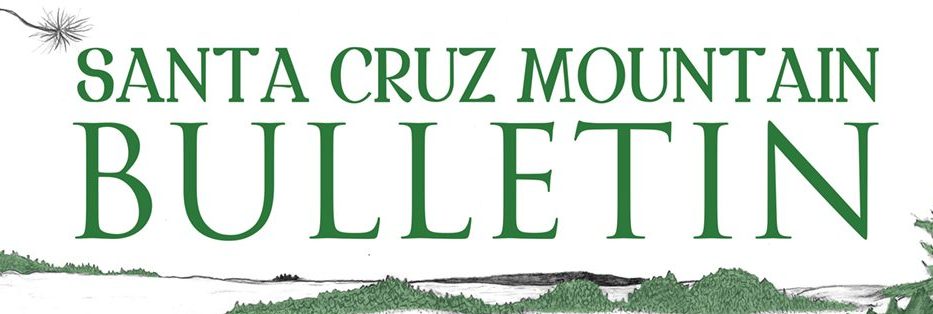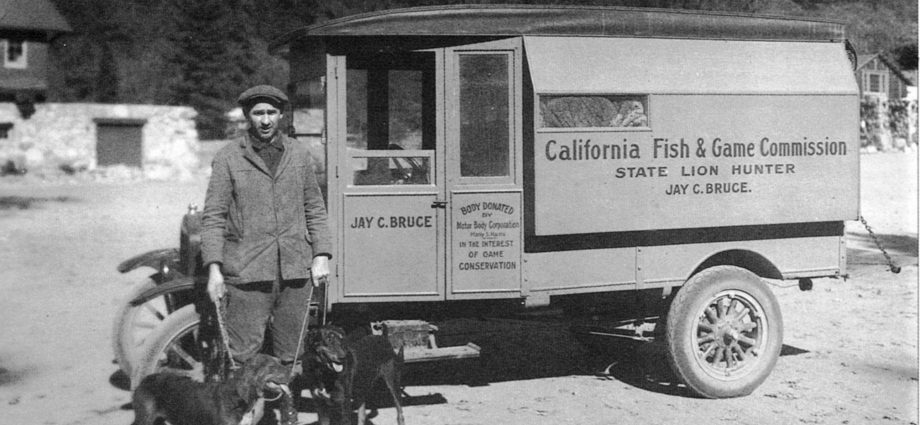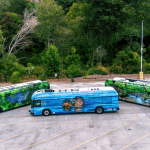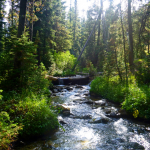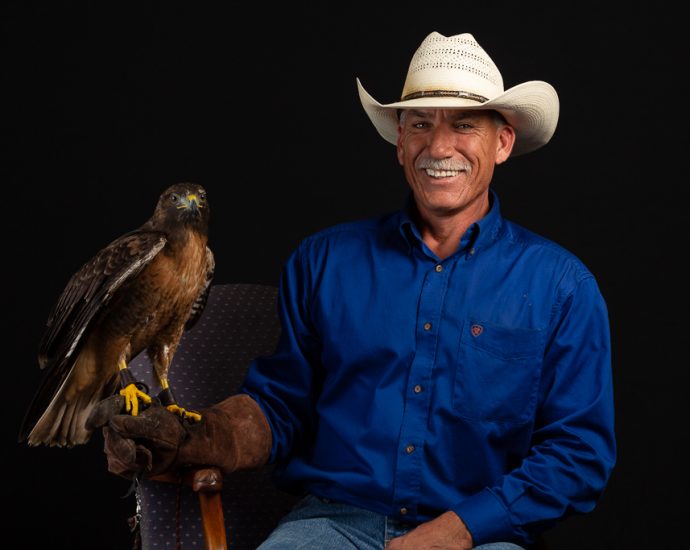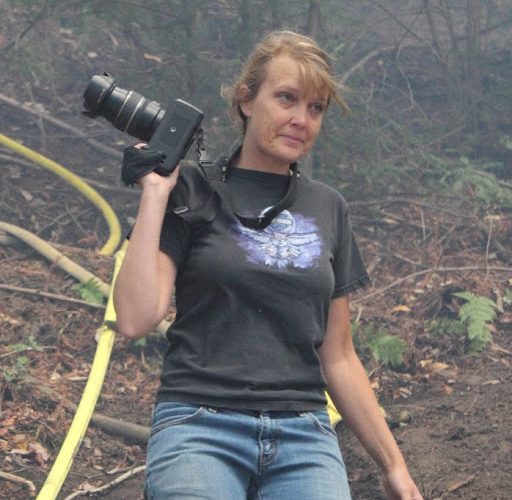by Lisa Robinson
In Santa Cruz County, as in most of California, mountain lions are apex predators. As with the smaller bob-cats and other predatory animals such as coyote, mountain lions were seen by early western settlers as a threat – a threat to game, to livestock, pets, and humans.
In October 1907, the first bounty program was initiated in California with $20 per animal offered as a reward for their killing, though in Santa Cruz County only four such bounties were awarded between 1907 and 1945.
In 1907, federal hunters were sent to the national forests to assist with the killings. In 1922, California became the only state to employ an official “State Lion Hunter.” Jay Bruce became renowned for his tracking, and killing of mountain lions. To track them he used some of the same techniques used today by the Santa Cruz Cougar Project – dogs and trees.
In 1930, state lion hunter Jay Bruce was called to Boulder Creek to investigate “considerable depredation,” however he left a few days later, unable to locate the animal. Bruce returned in February of the following year. After an hour inspecting the area, he declared “wan’t no lion.”
But twenty goats and sheep had recently been lost, so the “Locatelli boys,” Frank and Ernest, investigated. The Sentinel reported: “The mountain lion on Ben Lomond mountain has been killed. But he proved to be a pack of [four] wild dogs instead.”
In 1932, the Sentinel offices were visited by a 160-pound lion, the property of cameraman Sidney Snow. Snow had spent the last few years filming Bruce, and the resulting movie, “Cougar,” was to be screened at the new theater in Santa Cruz at which Bruce, Snow, and the “beautiful beast” would be making an appearance. Two weeks later at a screening in Modesto the “beautiful beast” attacked and badly injured an 18-year-old usherette.
In 1946, Bruce arrived in Santa Cruz to investigate the potential lion killing of a deer in the Quail Hollow. The lion turned out to be two coyotes and it was concluded that the very last mountain lion killed in the county was killed by Bruce in June 1923. He stated that if a pair had been left then “ranchers and deer hunters would kill several every year.”
Over the next decades, there would be many sightings, none substantiated. In 1963, the Senator Fred Farr, D-Carmel, sponsored a bill to abolish the state bounties paid on mountain lions, fearing that they would become extinct and citing abuses and fraud in the system. It was overwhelmingly approved.
In 1972, California mountain lions could no longer legally be killed for sport and in 1990 Proposition 117, a bill to permanently ban the hunting of mountain lions “unless for protection of life, livestock or other property,” was passed by voters. The bill also provided for mountain lion habitat restoration.
In 2013, the bill was amended to require that non-lethal methods be used if an animal, that was perceived to be a threat, needed to be relocated.
Today, mountain lions are legally classified as a “specially protected species.” In July 2019, the Center for Biological Diversity petitioned the Fish and Game Commission to list mountain lions as threatened under the California Endangered Species Act within Southern California and along the central coast. In April 2020, the Commission found that this was indeed warranted.
When a mountain lion kills a deer or other animal, the remains provide a source of foods for other creatures; mammals, reptiles, birds, insects, etc. Nutrients from the carcass, enrich the soil and so too the native plants. Mountain lions strengthen our ecological landscape.
Stop by the San Lorenzo Valley Museum’s gallery in Felton to see the exhibition Categorically Cats and pick up an informative free brochure on California Mountain Lions, while supplies last.
